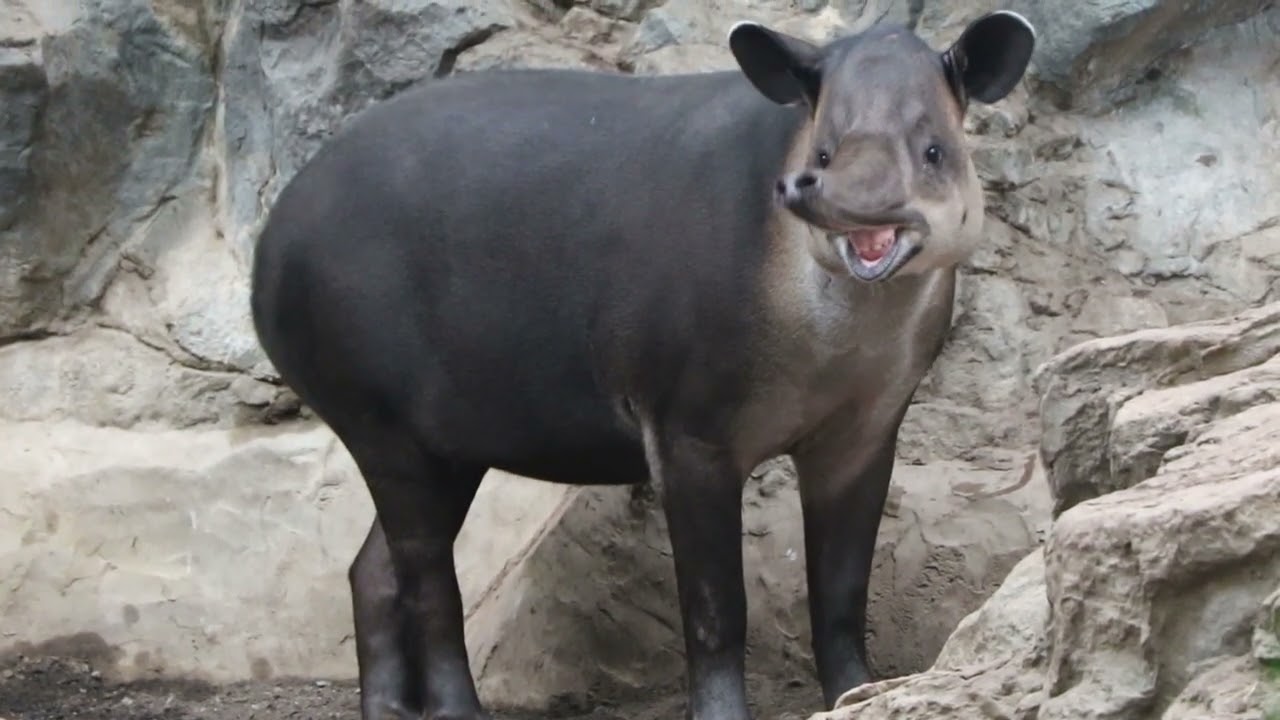– Explore the unique characteristics of Baird’s Tapir, an intriguing yet often overlooked mammal.
– Learn about the vital ecological role Tapirs play in their natural habitats.
– Discover the peculiar physical features that set Tapirs apart from other wildlife.
Have you ever encountered an unusual animal that instantly piqued your curiosity? Today, we’ll delve deep into the world of one such creature – Baird’s Tapir, an enigma wrapped in a dark brown coat with a most curious snout.
Tucked away in the forests and swamplands of Central America and parts of South America, Baird’s Tapir leads a secretive life. They are part of the family Tapiridae, which comprises four species scattered around the globe. A fifth Asian species, now extinct, speaks to the long natural history of these animals.
With over 50 million years of lineage, tapirs are survivors from a bygone era, a testament to their resilience. Baird’s Tapir, known scientifically as Tapirus bairdii, has its own story etched into the ecosystem it frequents. Yet, it remains an unsung hero of its terrain.
This elusive large mammal might sometimes be mistaken for a pig due to its stocky build, but that’s where the similarity ends. Sporting short, bristly fur, its thick skin ranges from dark brown to a reddish shade akin to the earthy tones of its forest floors. Against this backdrop, its paler throat and chests stand out modestly, almost as if they were blushing in the limelight.
What truly sets them apart, however, is their impressive snout. This prehensile masterpiece functions much like an elephant’s trunk, though on a much smaller scale. This agile appendage allows them to grab leaves and fruits that would otherwise be out of reach, showcasing nature’s creativity.
Despite their somewhat cumbersome appearance, tapirs are surprisingly agile. Those short legs, complemented by rounded and occasionally white-edged ears, belie an agility that might make even a seasoned gymnast envious. As adept swimmers, they navigate their wetland domains gracefully, often taking to the water to escape predators or cool down.
We often gauge an animal’s importance by size or ferocity, but the Baird’s Tapir’s significance lies in its ecological impact. Through their feasting habits, these animals are consummate gardeners, dispersing seeds throughout the forests, thus earning the title of ‘landscape architects.’ Their droppings serve as fertile grounds for new plant growth, facilitating a cycle of life that sustains their lush environments.
Their role doesn’t end there, as these gentle giants have more to reveal. The Tapir’s path through the forest underbrush is more than just a walk in the woods. These trails provide byways for smaller animals, making tapirs unwitting facilitators in a communal living environment. One can’t help but admire how interconnectedness unfolds in nature, with every species playing its part, intentionally or not.
Unfortunately, the Baird’s Tapir is facing a survival challenge, primarily due to habitat loss and poaching. Their plight highlights a profound disconnect between humans and the world we share with such fascinating creatures. As critical as they are to their habitat’s welfare, our actions outside those forests can influence their chances of continued survival.
Their tales of struggle and endurance are as silent as the tapirs’ padded footsteps. They’ve traversed through time, witnessed the altering landscapes, and continued to grace the Earth with their mysterious charm. Observing these creatures can teach us so much about the ecosystems they inhabit and our role in preserving them.
Conservation efforts have become a rallying call for finding ways to secure the Tapir’s future. Understanding the Tapir’s needs and habits is crucial for creating effective conservation strategies. For instance, safeguarding their corridors is essential for their movement and genetic diversity, pivotal for the survival of their species.
While the dreariness of some truths can weigh heavily upon us, it shouldn’t snuff out the light of hope. Conservation organizations are tirelessly working to ensure that the Baird’s Tapir does not become a whisper from the past. It’s a mammoth task requiring the trudging determination reminiscent of a tapir’s steady march through the undergrowth.
With every fact shared, every effort exerted, and every patch of forest protected, a front is being held to keep Baird’s Tapir not just surviving but thriving. It’s the least we can do for these creatures that tend to the forests without a single word of complaint.
Ultimately, Baird’s Tapir’s existence is a poignant reminder of the delicate balance of our ecosystems. They are not merely animals to be observed but are storytellers in their own right, narrating an epic of resilience, coexistence, and ecological significance through their very being. To hear their story, one must be willing to listen carefully, never interrupt, and always respect.
Are you intrigued by Tapir’s tale? Follow the adventures of wildlife up close and personal as we share more insights from the natural world. Stay connected with us on social media, visit our Facebook pages for Stone Zoo and Franklin Park Zoo, or follow our thoughtful explorations on Instagram, Twitter, TikTok, and Threads. Each platform is a window into uncharted territories, a glimpse into the lives of creatures that share our world yet live a wildly different narrative.
Remember, our understanding is the first step toward their preservation. So join us, engage, and be part of the local and global efforts to ensure that animals like Baird’s Tapir not only grace history but continue to roam the Earth for future generations.
*****
Source Description
Tapirs are stocky animals with short legs and short, bristly fur. Their thick skin is dark brown to reddish brown, with a lighter throat and chest, short tail and long prehensile snout, and rounded ears edged with white.
Want to learn more about wildlife? Let’s be friends; follow us on social for more tidbits just like this:
https://www.facebook.com/stonezoo/
https://www.facebook.com/franklinparkzoo/
https://www.instagram.com/zoonewengland/
Tweets by zoonewengland
@franklinparkzoo
@stone_zoo
https://www.threads.net/@zoonewengland


